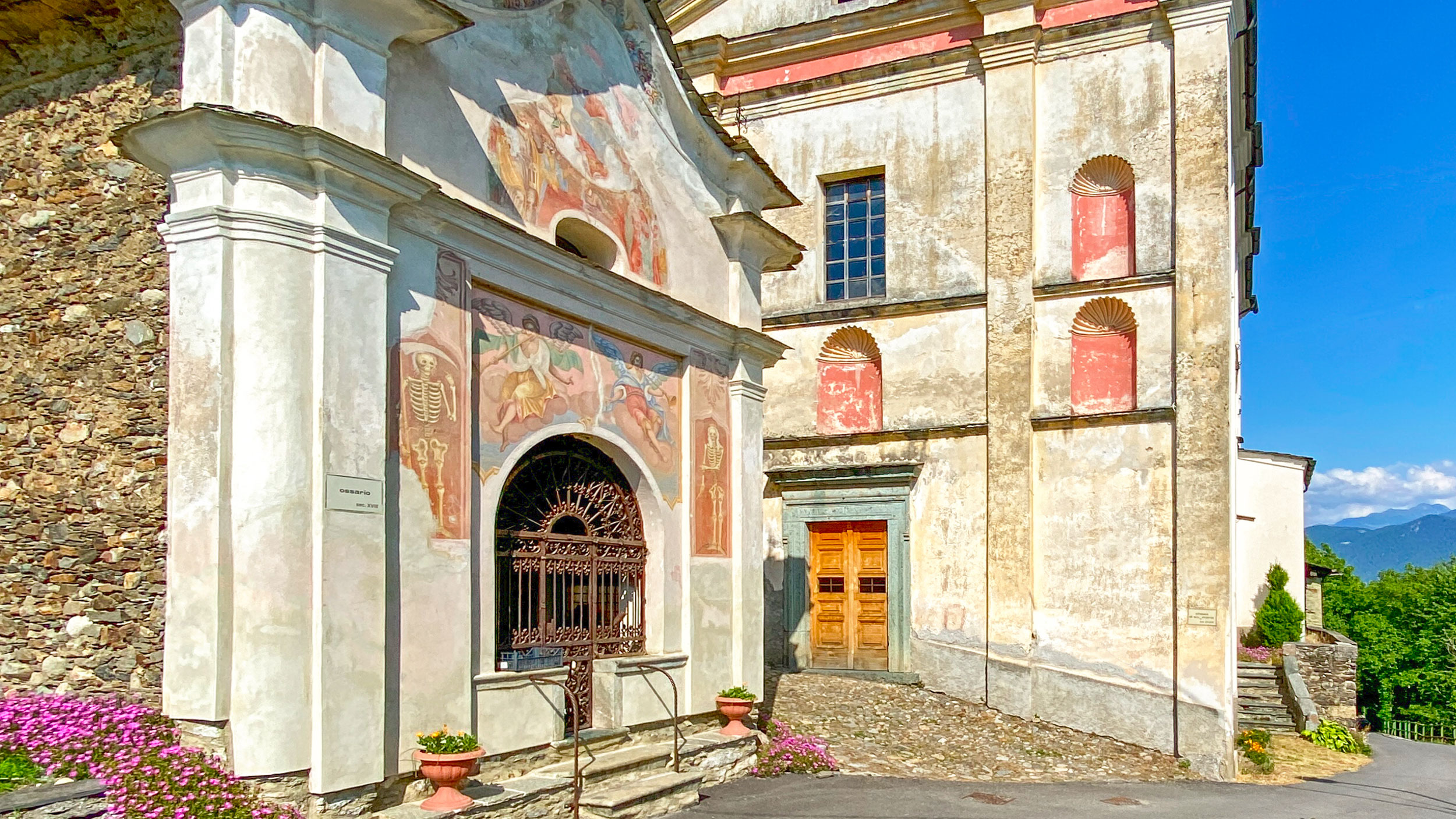23036 Ligone (Santa Maria) SO
Leaving the vineyards and orchards on the alluvial fan of Ponte behind you, the path climbs up to Ligone, an old contrada of Teglio subdivided into three nuclei: one around the church of San Rocco (Ligone inferiore), the one where you are now (Ligone superiore), and one a bit higher up (Cuntradèl), a delightful cluster of typical rural dwellings that have been restored as vacation houses in an area strongly oriented to tourism.
The Dòs de le Fórca extends below you, a series of meadows interspersed with rock outcroppings where petroglyphs have been found dating between the Neolithic and the Iron Age.
Santa Maria is a neighborhood church but also a Marian sanctuary for the inhabitants of Teglio, who arrive in solemn procession for the festivals dedicated to the Madonna. Originally built in the Middle Ages, it was enlarged during the 17th century with the help of the faithful, going against the wishes of the Bishop of Como, Carlo Ciceri, who attempted to stop the work in 1681, feeling it was unnecessary and too costly.
All that has remained of the former church is the socle of the belltower and the walls of the old quadrangular apse, which were built higher. The stratification is very clear if you go around to the back of the church: the Renaissance oculus is surmounted by a Serlian window typical of the Baroque period.
The façade is characterized by tall pilaster strips, a triangular tympanum, and two orders of niches in keeping with a characteristic local model. The nearby ossuary, built in 1777 and frescoed two years later, is particularly graceful in form.
Inside, the oblique-checkerboard floor in white marble and locally quarried pietra verde (1718-20) and the lovely wrought iron chancel screen and railings, evidence of the flourishing craft of local ironworkers, contribute greatly to the beauty of the nave.
The cappella maggiore adds a note of color with frescoes of Stories of the Virgin, Prophets, and Angels by Giuseppe Prina of Bergamo, who was active in Valtellina in the early 18th century. The marble altar (1742) by the Buzzi brothers of Viggiù features a painting of the Annunciation that was originally in the earlier church.
The chapel on the left side, dedicated to Mary’s husband, has a stuccowork altar characterized by the color contrasts between the black structural elements and the white statues (1738). The altarpiece depicts the Death of St. Joseph. Prina is the author of the two paintings on the walls with Stories from the Life of St. Francis Xavier.
The chapel on the right side, dedicated to the Virgin of Carmel, is simpler in appearance but it is here that the faithful are drawn upon entering the church. It contains the only surviving ex-voto and a 17th-century painting of the Madonna giving the Scapular to St. Simon Stock.







